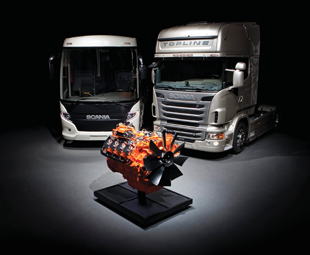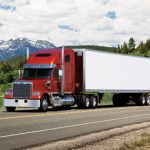Demystifying diesel

It’s widely known that the diesel engine was invented by a doctoral candidate with a bursary from MAN. What’s not commonly known is that the inventor’s actual inspiration was a device Indonesian tribes people used to light their fires. JAKE VENTER lets us in on this secret and tells us what is distinctive about the diesel engine.
Diesel engines have been around since 17 February 1894. On this day Rudolf Diesel first succeeded in getting his initial prototype to run for a minute at 154 r/min to deliver 13 kW. Since then the diesel’s favourable fuel consumption has made it the engine of choice for all forms of heavy transport.
Diesel engines are also known as compression-ignition engines because the fuel/air mixture is ignited by the heat that results from the high compression ratio. If you’ve ever pumped up a bicycle tyre with a hand pump you know how hot compressed air can get.
But it was a fire pistol that gave Rudolf Diesel the idea for such an engine. This is a device that Indonesian tribes have been using for more than 1 000 years to start fires. It consists of a small wooden piston on the end of a shaft that fits closely into a hollowed-out bamboo cylinder. A small amount of dry powdered leaves are put into the cylinder and the shaft is then given a sharp blow. If done correctly, the heat of compression will set the leaves alight.
Such a pistol was given to Diesel while he was studying for a doctorate in thermodynamics, which is the study of the energy conversion between heat and mechanical work. This set him thinking about the possibility of building an engine that used such a heat source to ignite the mixture.
He had played around with experimental engines for many years before the fateful February when everything came together. He was financially and technically supported by MAN Truck & Bus, and had links with the Sulzer company so that these two concerns were the first to build diesel engines, and they still do!
HOW IT WORKS
The distinguishing feature of the diesel engine is that it sucks in only air and the fuel is injected just before the piston reaches top dead centre. The amount of power developed is controlled by the amount of fuel being injected.
 The first drops of fuel enter the combustion chamber from very small holes in the injectors while they are still in liquid form. These drops cannot ignite until evaporation has taken place, and this process takes place from the outside inwards, so that after about one to two milliseconds each drop of fuel will consist of fuel/air layers that get progressively leaner towards the outside.
The first drops of fuel enter the combustion chamber from very small holes in the injectors while they are still in liquid form. These drops cannot ignite until evaporation has taken place, and this process takes place from the outside inwards, so that after about one to two milliseconds each drop of fuel will consist of fuel/air layers that get progressively leaner towards the outside.
These droplets then ignite with the result that lots of little fires will appear all over the combustion chamber. The result is an increase in the temperature of the surroundings so that the newly emerging fuel droplets will evaporate a lot quicker than the initial ones.
In this way most of the fuel will find the oxygen it needs to convert into carbon dioxide (CO2), or if there is not enough oxygen, into carbon monoxide (CO). Water is also formed but it leaves the engine as steam once the engine is at running temperature.
The output is controlled by the amount of fuel being supplied instead of the amount of mixture, as happens in a petrol engine, and this has a number of advantages. It means that when the driver does not demand a lot of power the amount of fuel entering the engine is so small that the overall mixture is extremely lean, but the mixture right next to a drop of fuel is rich enough to burn. In this way a diesel engine manages to run on overall mixtures that are so lean a petrol engine will not run.
This type of combustion has the advantage of taking place in the presence of air, instead of a mixture. This eliminates the danger that some of the mixture might detonate spontaneously, and cause engine damage, as sometimes happens in a petrol engine; either due to low-octane fuel or an advanced spark.
The delay period before the fuel has been vapourised, mentioned above, may only be a few milliseconds but this is enough to make diesel combustion significantly slower than petrol combustion. This explains why few diesel engines will run much faster that 3 600 to 4 000 r/min.
In the past diesel engines had a mechanical fuel-pump/regulator unit that supplied fuel to every injector via unequal-length fuel lines. This resulted in fairly low, unequal fuel pressure at the different injectors. Most modern diesels are now fitted with common-rail systems that combine a high-pressure electric pump with a fuel reservoir close to the injectors so that each injector gets the same high pressure. These high pressures have decreased fuel droplet size, and therefore shortened the delay period with the result that some small diesels will now run to 5 000 r/min.
Published by
Focus on Transport
focusmagsa



